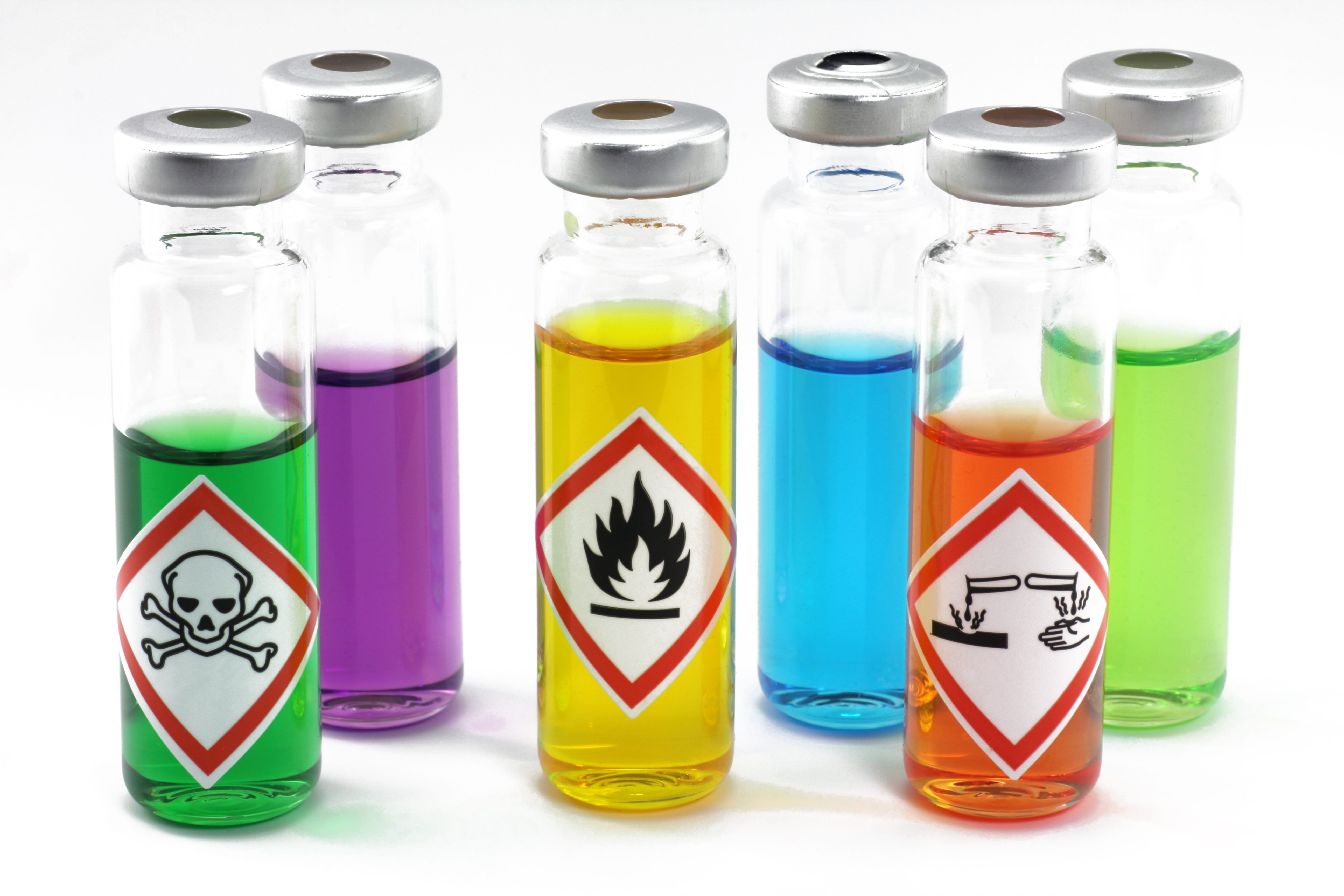 The secret is out, we love chemicals. They can provide safe and effective solutions to our every day life and hobbies. Because of this, however, people tend to forget that chemicals can also be dangerous. While most of us have the common sense to not take shots of Star San, there a lot of accidents that happen in a brewery (both commercially and in your garage).
The secret is out, we love chemicals. They can provide safe and effective solutions to our every day life and hobbies. Because of this, however, people tend to forget that chemicals can also be dangerous. While most of us have the common sense to not take shots of Star San, there a lot of accidents that happen in a brewery (both commercially and in your garage).
We take pride in the safety and environmentally friendly qualities of our products. That being said, there are always things to keep in mind when transporting, storing, and using chemicals. No matter how safe a chemical claims to be or how much experience you may have with using them, follow these tips to you stay safe with your set up.
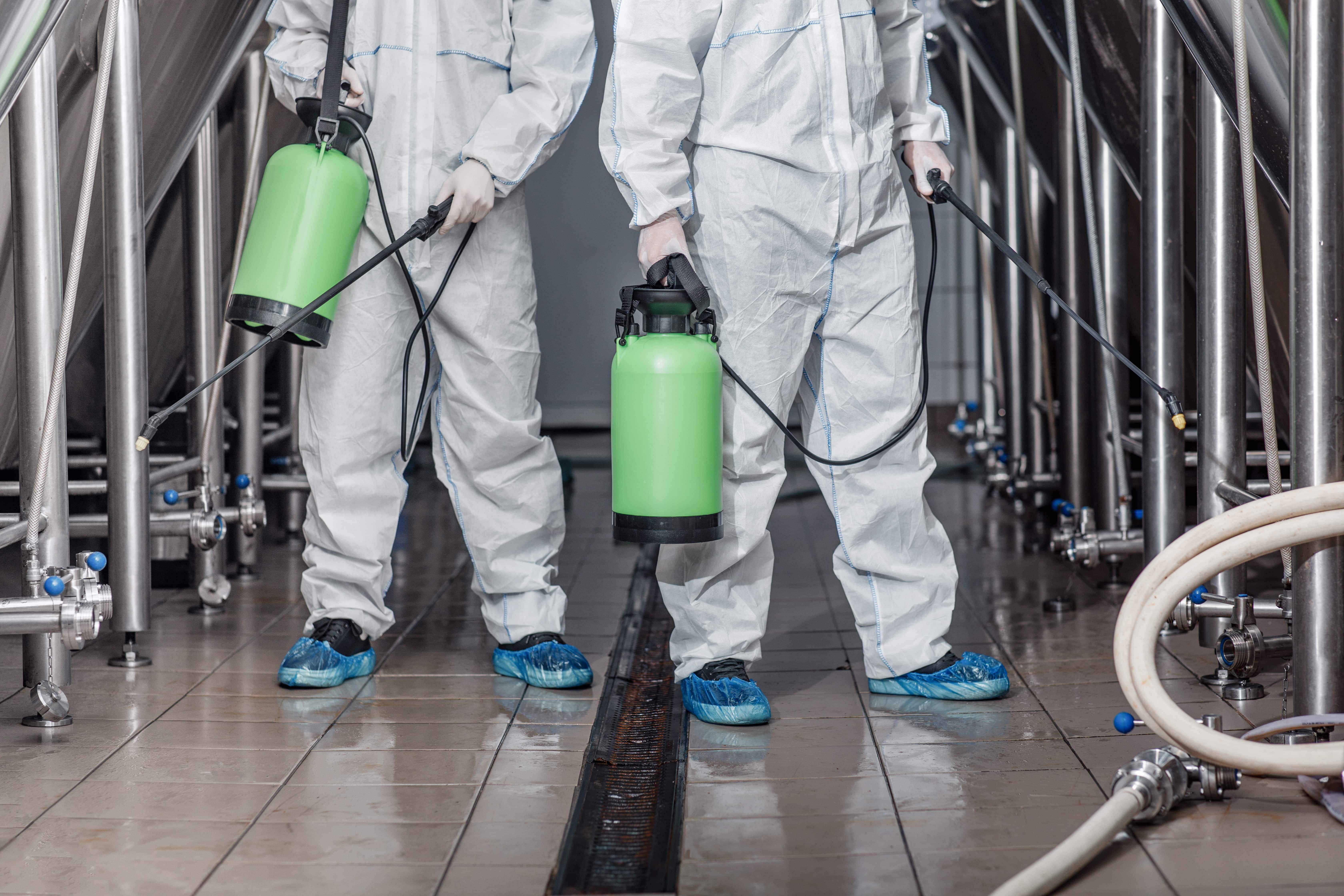
Just like in high school, we are telling you to always wear your protection! Safety glasses, gloves, and closed-toe shoes should always be worn throughout the entire cleaning process (doesn't have to be a full hazmat suit like shown, but sometimes we like a dramatic effect). And by “entire process,” we mean from the moment you take the chemicals off the shelf until they are safely returned. Did you know that accidents most commonly occur when you are preparing and cleaning up chemicals? Keep yourself safe and always make sure to thoroughly rinse your protective wear when you are finished using them.
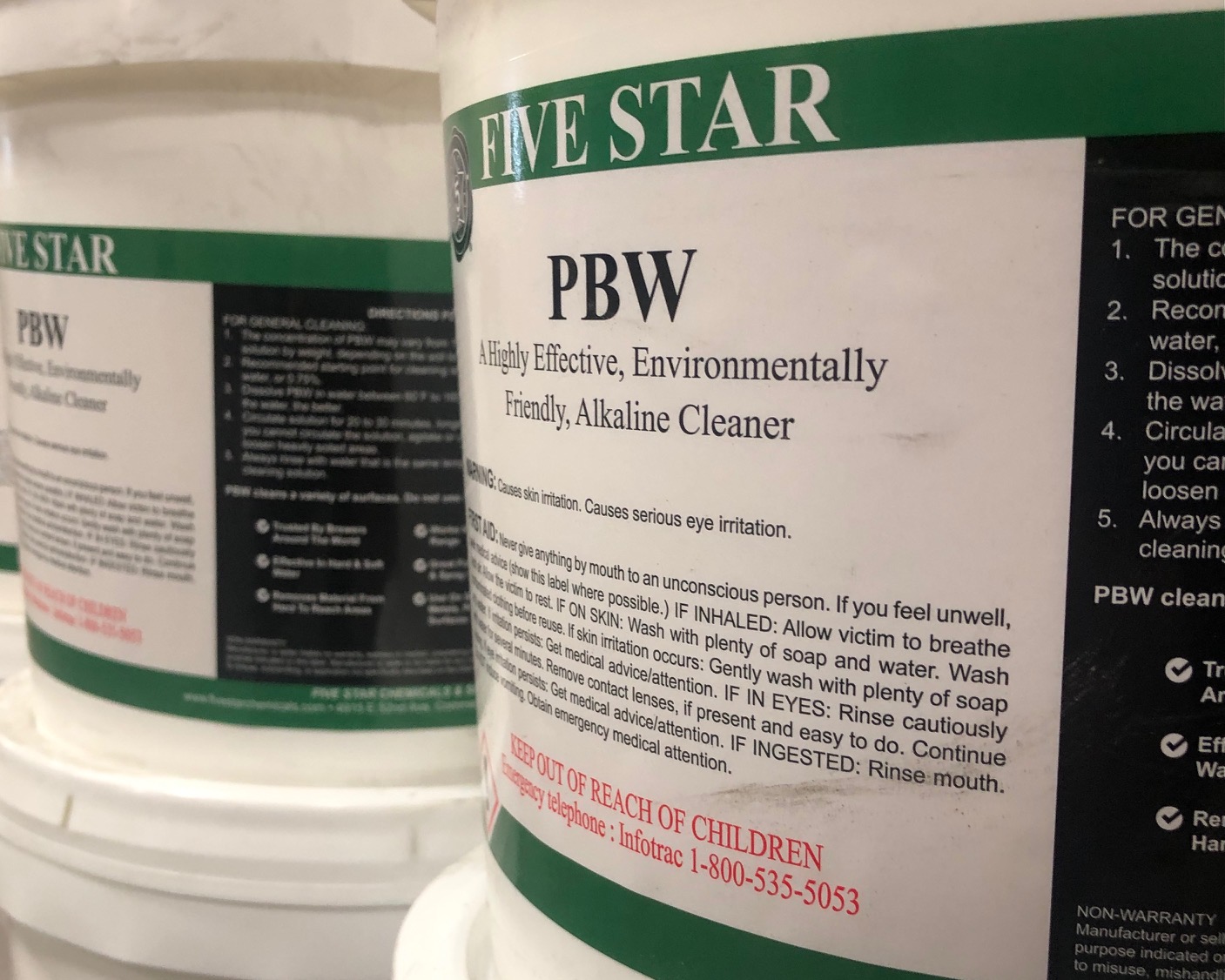 2. Pay Attention to the Labels
2. Pay Attention to the LabelsJust like pineapples on pizza, some things just don’t go together. When it comes to brewing, the last thing you want is to accidentally mix chemicals. Say you’re cleaning after a brew day; you have music playing and maybe you’re even on the phone. As you're distracted, you pour acid cleaner in with another one that contains caustic or chlorine. This mixture can cause toxic fumes that have a reputation for sending people to the hospital. If you take the time to read the labels, you could save yourself a lot of hassle and potential harm. This includes paying attention to the dates as well. Most of our chemicals have a shelf life of one year in IDEAL storage conditions.
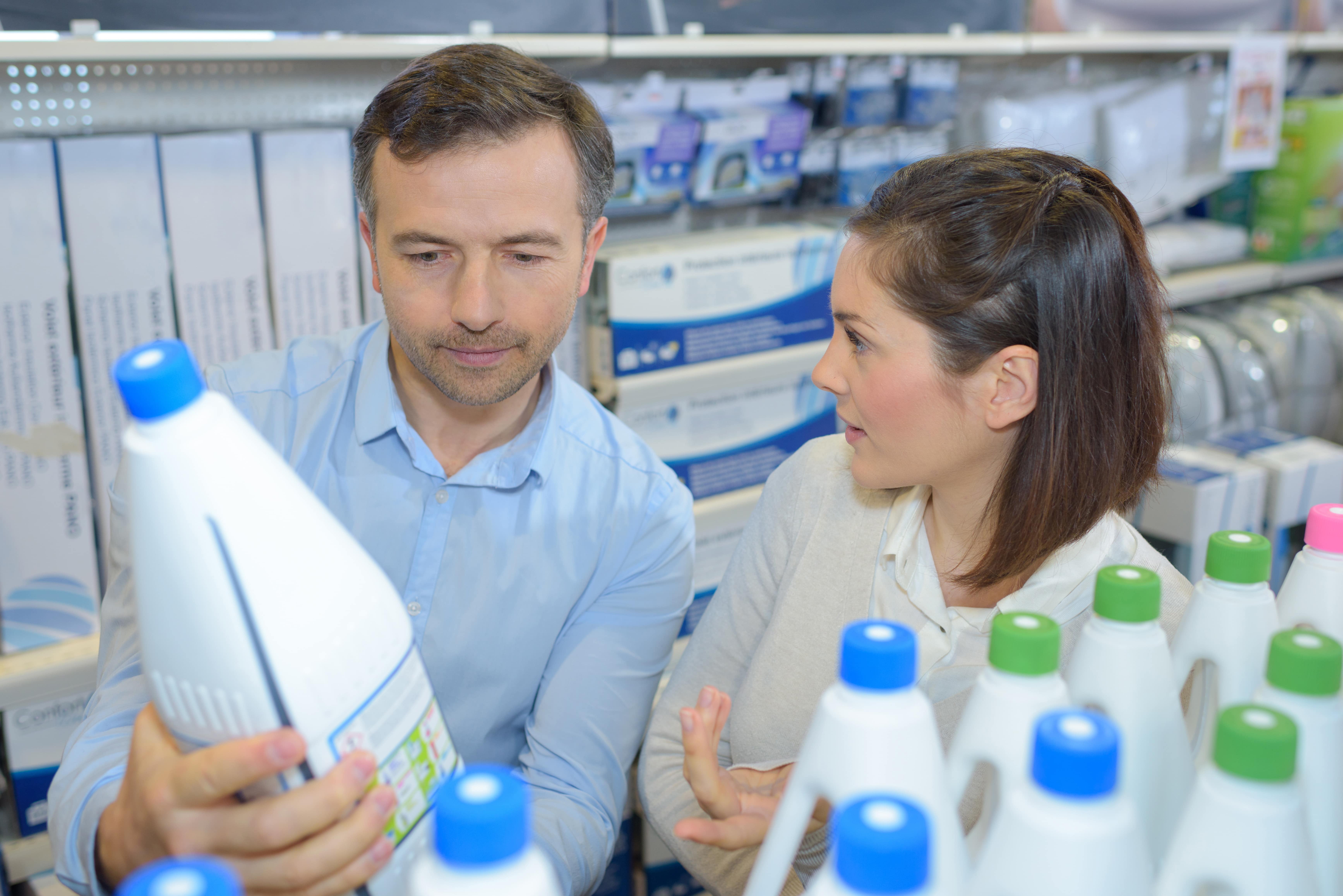 3. Appropriate Storage
3. Appropriate StorageSince we’re on the subject of ideal storage and chemicals causing some less-than-desirable reactions, let’s talk about where to keep them when they aren’t in use. Those chemicals that don’t mix well should be stored separately too. Here are a few pointers to help you find a storage space that is safe for you and the chemicals:
• Find a spot that is cool and dry. Heat can cause some sanitizers to evaporate chemicals into the air creating a potential breathing hazard.
• Keep the temperature relatively constant wherever you decide to store them, as some chemicals can react to extreme fluctuations. We recommend between 60-100 degrees Fahrenheit.
• Make sure your storage space is well ventilated and away from HVAC intake vents. This will help stop the spread of fumes.
• Keep out of the reach of children and animals.
• Find a spot that does not see sunlight - either direct or indirect. This will shorten the potency and shelf life for them.
One last thing, what’s the point of storing your chemicals safely if you don’t follow through with it and put them back when you finish?
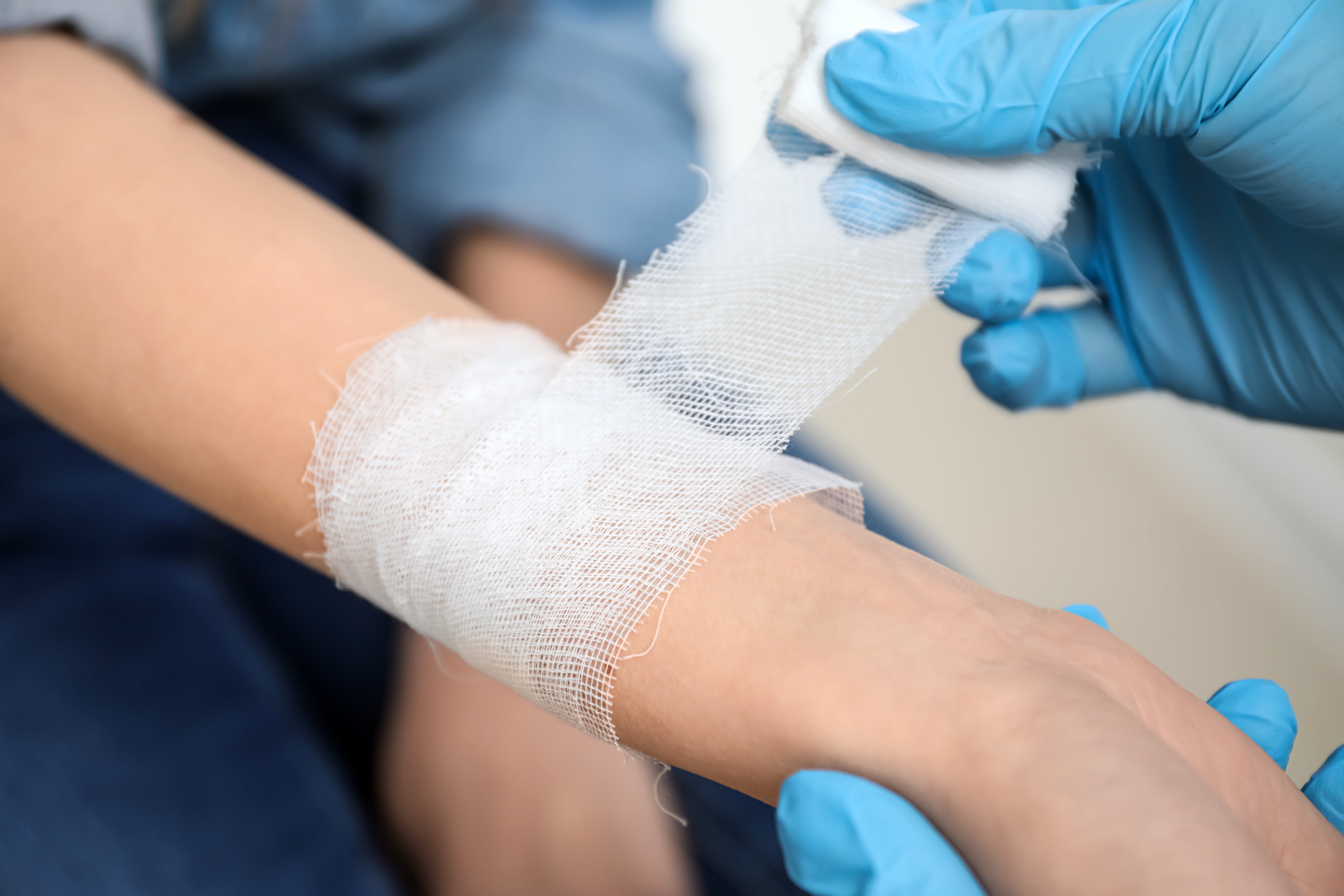
No matter how hard we all try, sometimes the world is just out to get us (just look at the year 2020, for example). When handling chemicals, try to make sure you have a basic first aid kit nearby. Here are a few additional steps to make sure you stay safe in light of an accident:
•When chemicals get on your skin, whether safe for contact or not, flush with cool running water for at least 15 minutes.
• Never try to neutralize a burn before rinsing, this can cause a chemical reaction and make the burn even worse.
• Make sure the water runoff from rinsing is not getting on you or someone else as it is now contaminated with the chemical.
• When any chemical gets into your eyes, immediately flush with cool running water, or saline if you have it, and seek medical attention as soon as possible.
• If you inhale toxic fumes from a chemical, get to fresh air as soon as possible and seek emergency medical attention immediately.
Do’s
Many of these are common sense but we’re going to take a few minutes and list them anyway.
• Mix chemicals to water and pour gradually! This is especially important when mixing caustics. Once the caustic is added to the water, it will start to raise its temperature. If poured too quickly the mixture will boil out.
• Consider using a secondary container, like a plastic tub, to protect the storage area from possible spillage.
• Securely tighten the lids on the containers before storing them.
Don’ts
• Store heavy containers on high shelves. They should be kept at, or below, eye level.
• Store in hot or damp areas
• Mix water to chemicals
• Use the same measuring container for all chemicals, even small reactions can be violent ones.
• Mix acids with chlorine bleach, because it will create a deadly gas.
• Store on the floor - not even temporarily!
• Overcrowd shelves - the last thing you want is to reach for something and get an avalanche of chemical containers raining down on you.
• Get creative with mixing chemicals without consulting a professional (i.e. us - contact us here ).
